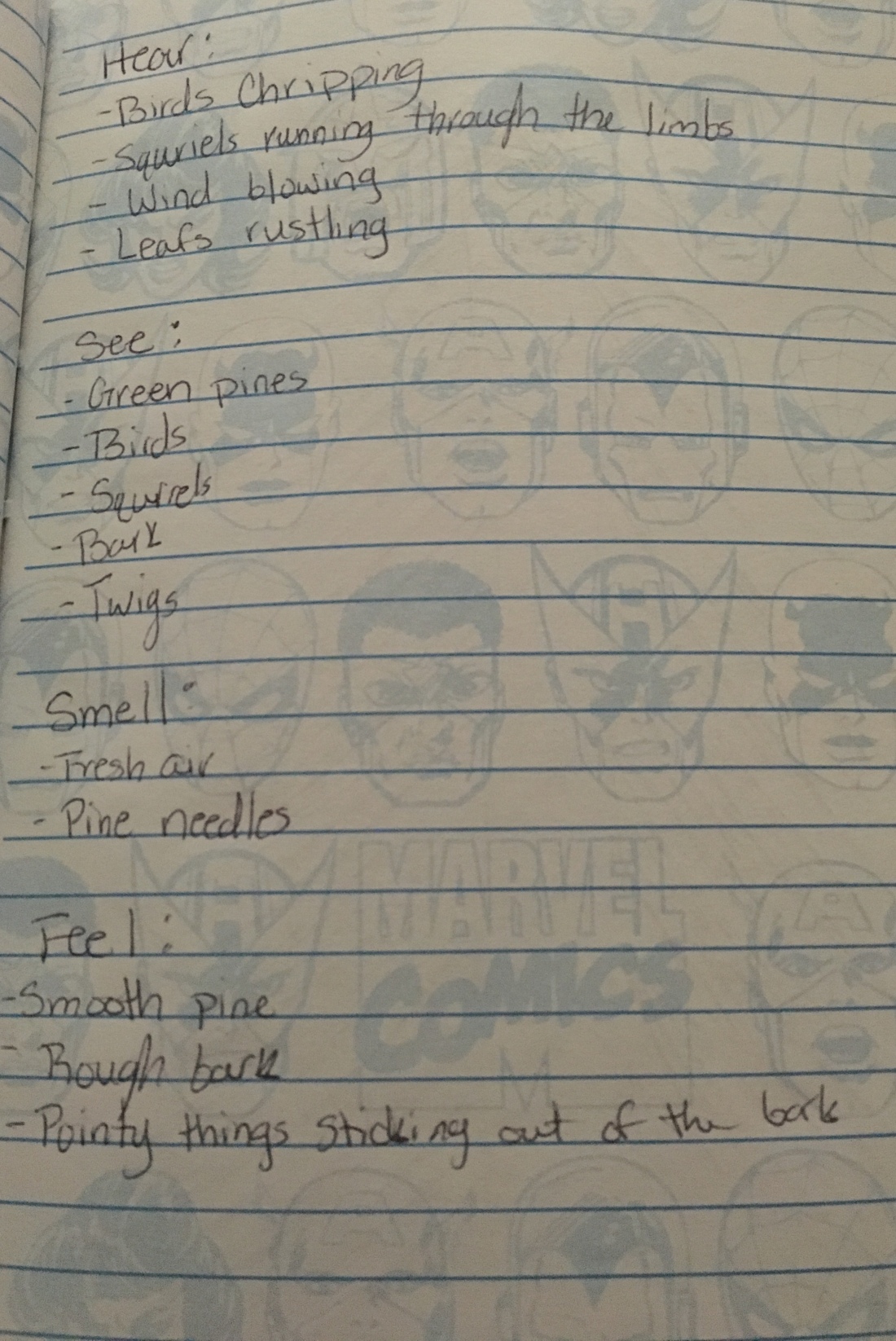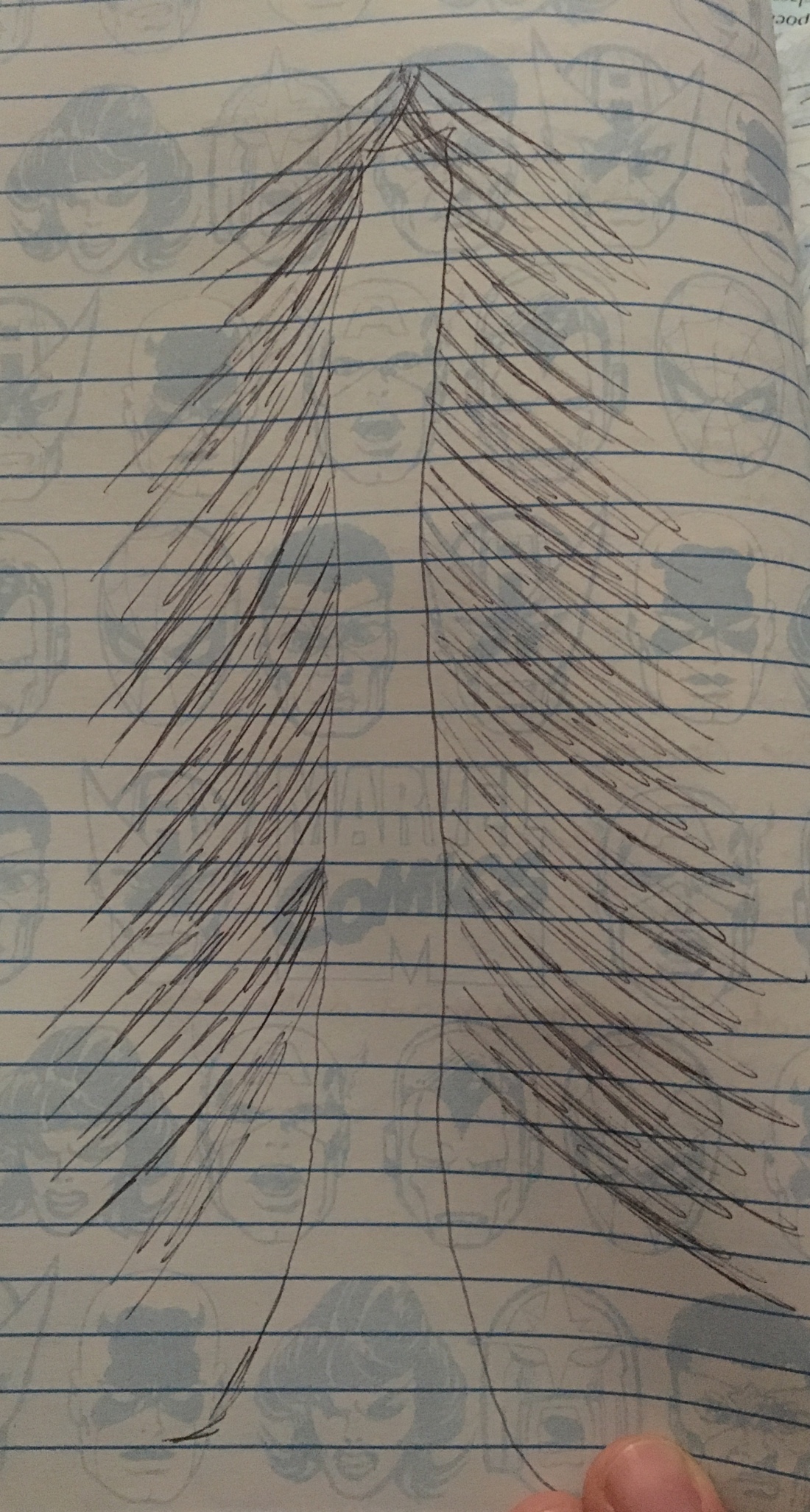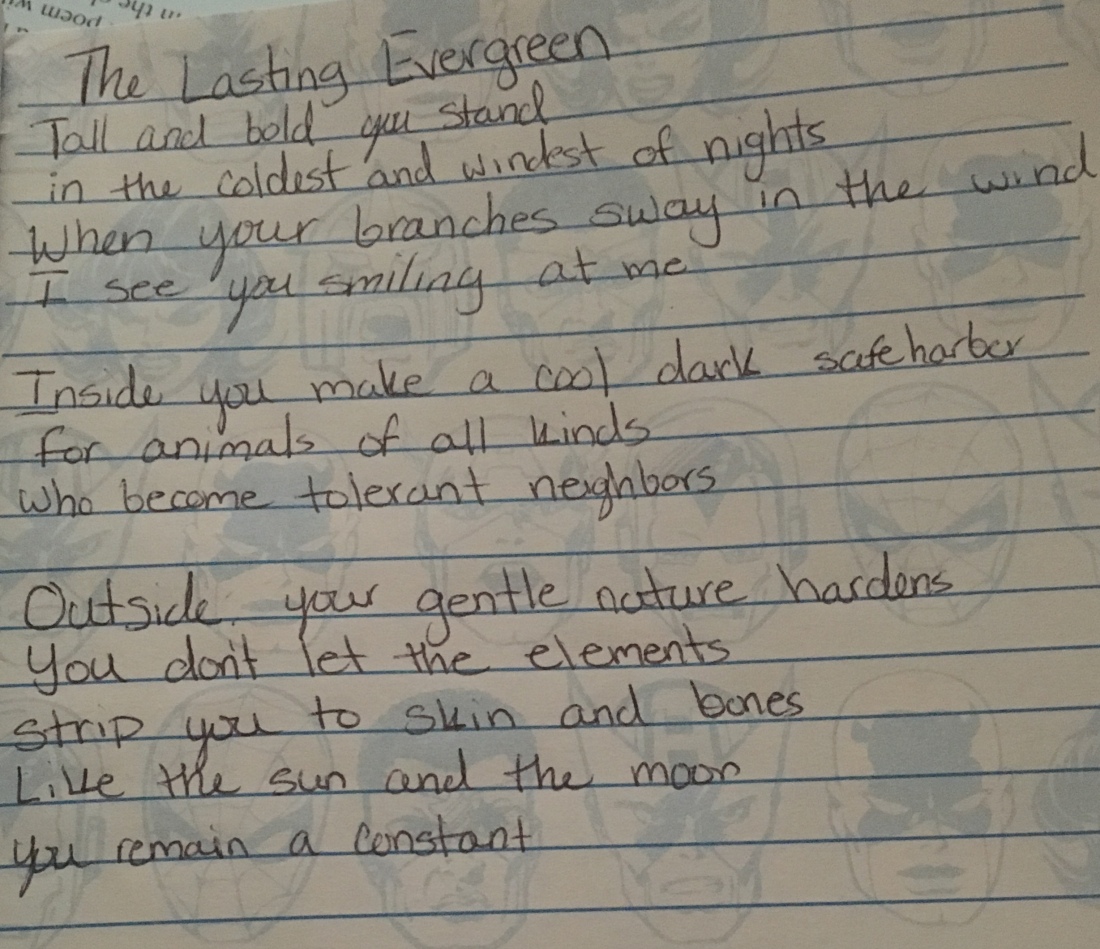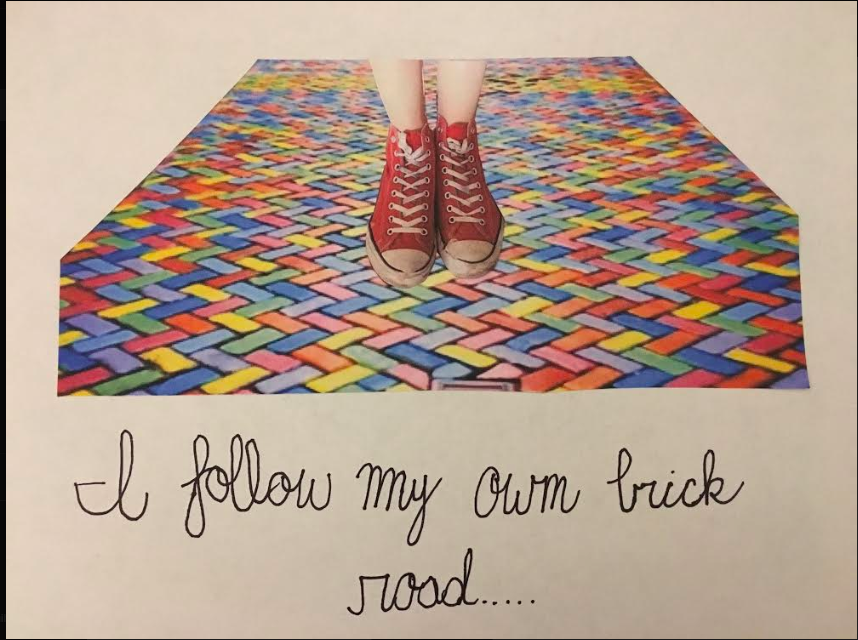Separate is Never Equal
“Mexicans should be segregated like pigs in pig pins, they are filthy and have lice and all other kinds of diseases.” It doesn’t take a rocket scientist to figure out that these words are extremely hurtful, ignorant, and just plain unkind. But believe it or not a real man said these words in front of an entire courtroom filled with people. His name was James L. Kent and he was the superintendent of Garden Grove School District and he said this exact phrase during the trial that involved Sylvia Mendez and her family who fought for the desegregation of schools in Orange County. Ufortunately, people like Mr. Kent have always existed and always will, they for some reason think they are superior over others simply because of the color of their skin. The book Separate is Never Equal does an amazing job at retelling the true story of Syliva Mendez and her family and their fight and struggle to have fair rights within education.
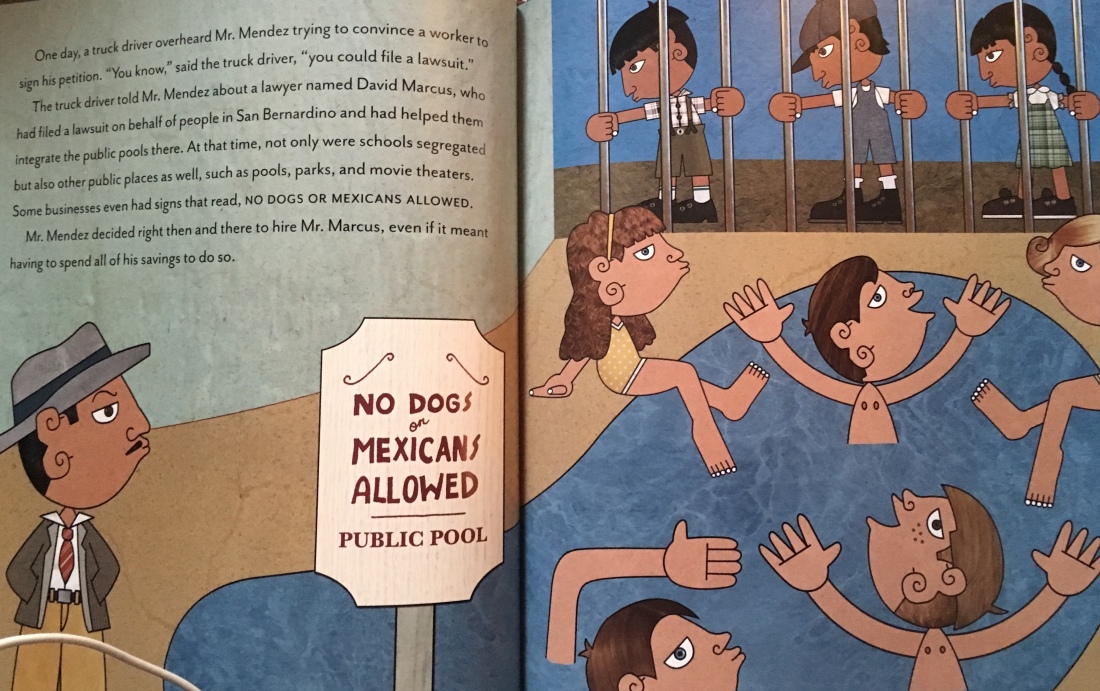
We see here in this picture above that this image is clearly depicting racism in the fact that children who are Mexican are not allowed in the pool. I also wanted to point out that on the sign where it is saying who and what is not allowed in the public pool that they put dogs before saying Mexicans. That is horrible as the message that is being conveyed that dogs mean more and are more important than actual human beings. We can also see that the children who are in the pool are almost in a way mocking the ones who aren’t as they know that they are better than them. One of the biggest symbols in the illustration though is that the Mexican kids are trapped behind bars. This can signify and represent a lot in that they are prisoners in their own communities and their freedom will always be detained.
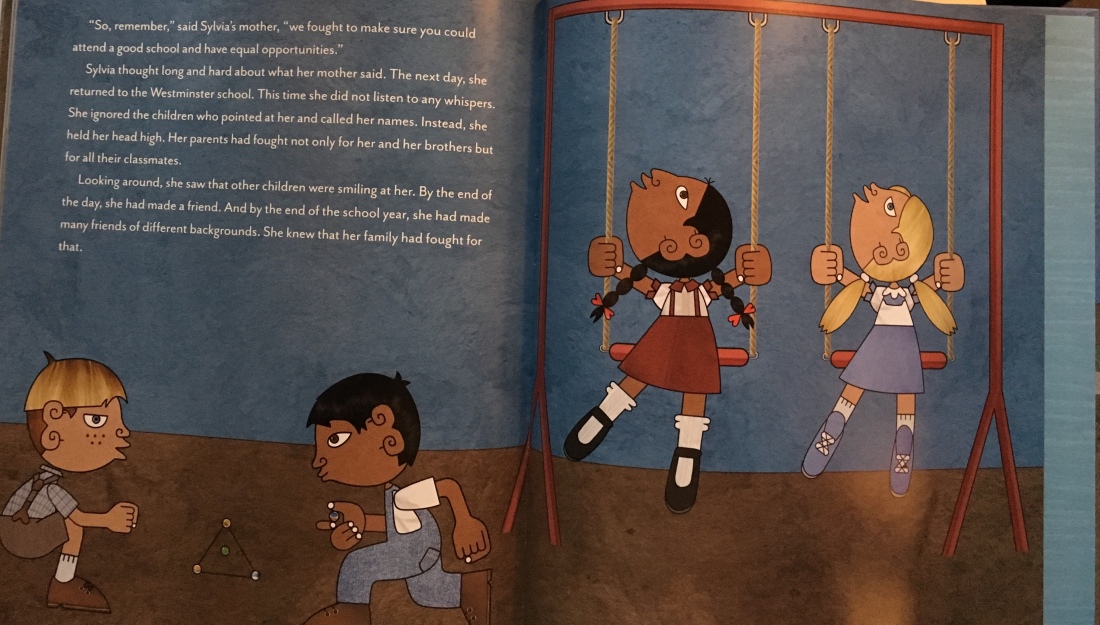
We see here now in the image above that from all of the stereotypes that we were shown in the book that they are all now broken. They are taking part in school activities and their peers. They CAN speak English and they are well-groomed and keep up with their hygiene. They are playing together and in harmony. This picture shows us that kids don’t care as much about things such as skin color, they see a person who will swing on the swing with them or someone who likes playing marbles as well. Nobody is born with racism at their heart, it is taught.
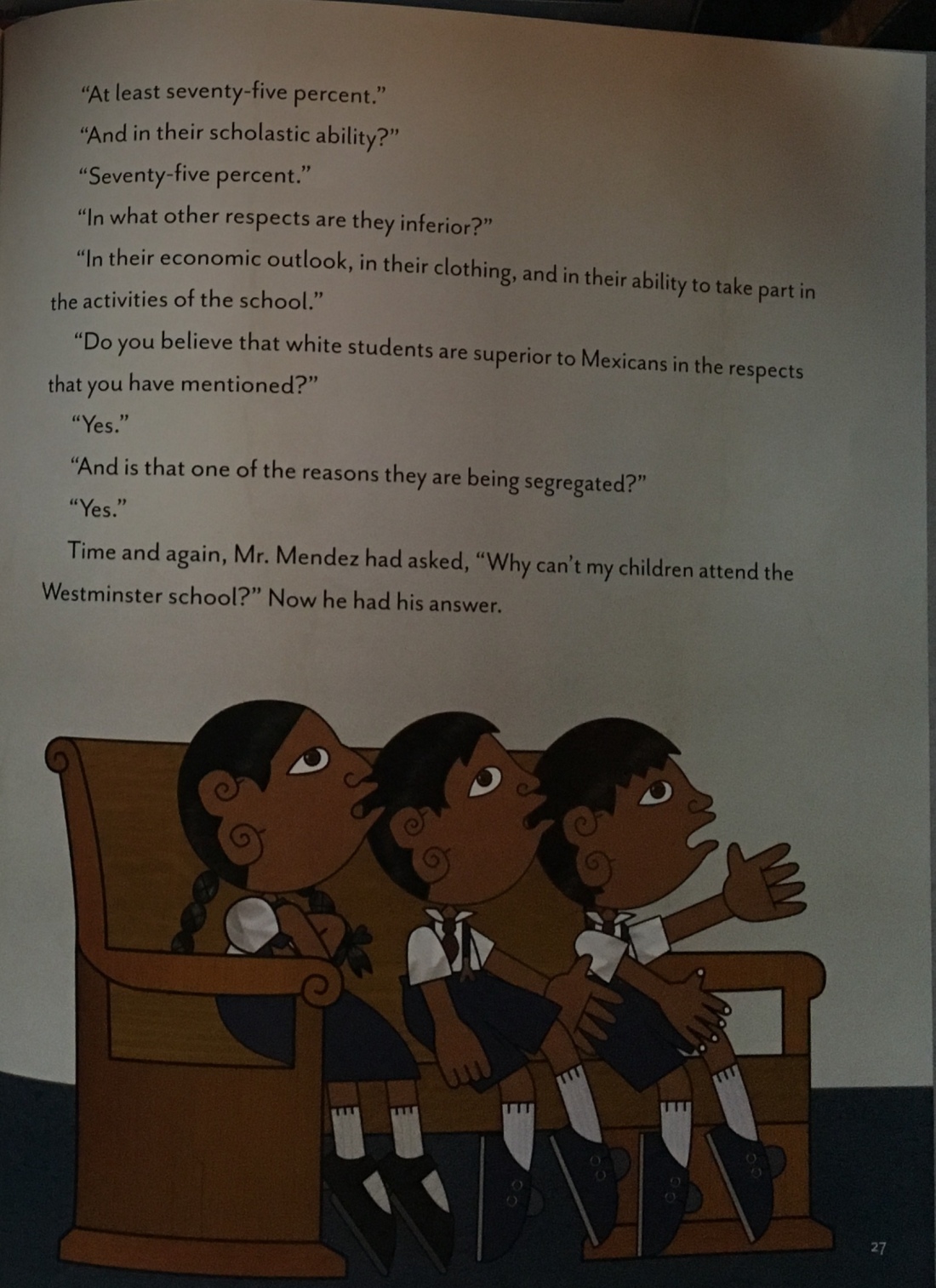
When you look at this picture you might just see three children sitting on a bench who might be surprised or upset about something. However, I see three children displaying activism. This is the part in the story when they are in the midst of the trial. The fact that they are in the courtroom and paying attention and are aware, proves to me that they care about their education and really belive in the cause that they are fighting for. In a later line it talks about how Sylvia is always ready to testify on the stand for her right to go toa nice school and receive an education and I think that speaks volumes considering that she is so young.
This book centers around the Mendez family and especially Sylvia. We learn that the children are being discriminated against. They want to go to the school that is closet to their home, but the school board says they cannot because they have to go to the Mexican school. They have to bring their case in front of a court and state their case where they end up winning and their children are allowed to go to their home school.
The author and illustrator of this book is named Duncan Tonathiuh. He is a Mexican-American who gives insight in this book on the Hispanic cultural experience. While he never experienced having to go to another school and to have to fight in a court case to go to other, he did face some discrimination because of his skin. In the article he talks about his inspiration for his drawings. They stem from 14th century Mixtec Codics. He says he wants to keep the ancient art alive and to make it accessable to all children.
One Last Word
Nikki Grimes was born in 1950 in Harlem, New York. She started writing from the very young age of six and by the age of 13, she was performing in front of audiences. Her life was rough as she came from a broken family. Her and her sister were in and out of foster care, but eventually ended up back together with their family. She grew up in a very rough area where violence was common. She is quoted as saying “sometimes I wondered if I would survive.” She struggled in school until a teacher, who she became very fond of, helped her through it. James Livingston acted as her mentor until she graduated high school and she went on to receive a degree from Livingston College of Rugters University.
Each of these poems, Nikki, took from an African-American poet who some even wrote during the Harlem Renaissance. Most of them write about the beauty and power within the human spirit and to truly embrace who you are. That brown skin isn’t just a color it is beauty and should be embraced.
My favorite poem in this book is A Dark Date for Josh. This poem focuses on Josh who is a white teenager who is so excited to take a girl, named Tanisha, that he likes to prom, she is black. We see that his mother has a conniption and tells Josh that he absolutely is not allowed to go with her. Long story short, the mothers insecurities come from her own personal experiences. Nikki breaks stereotypes by having an interracial couple attend prom together in Mississippi. I have a strange draw to this poem. To me it speaks volumes.
This book talks about the ugly truth of racism and stares it right in the face, but also finds the beauty in it all. It shows us that beauty can be found in the ugliest of places. It teaches people to embrace who they are to find themselves beautiful and there is power within that.
I’d Always Imagined
By: Emily Cox
I’d always imagined what it would have been like to see her blossom and grow
I’d always imagined what she would have looked like down to the very tips of her toes
I’d always imagined that she would be a free spirit who would dance bare
Who took on the challenge of the ugly world and didn’t ever seem to care.
She would face her enemies with all the dignity and grace
Head-on, full heart, but would never forget to put on her forgiving face
I’d always imagine that she would love the world even if it didn’t love her back
And not once did I ever see a tear, a fit , or a crack.
But the world isn’t ready for her yet or maybe it’s me, hard to say
So I’ll put her back in the cage, in my mind where she’ll stay.
I’d always imagine that this is how that girl would be
But I’ll never know because I threw away the key.
Beautiful
By: Emily Cox
One of the most beautiful things you could ever do is to sit back and watch the world, watch it so
that you see every bit and part of it. The good, joyful, bad, and unpleasant parts. I’ll
never forget how I was passing a birthday party in my car one time. I see the smile and joy on her
face, but while she is celebrating life, I head to funeral to mourn a loss. You’ll find that life doesn’t wait for anybody, in that sense, we are all equal. You can stare at it and it will stare straight back,
Waiting for you to make the first move. It plays a strategic game, it will put thoughts in
your head and cast feelings upon your heart to where at some point you aren’t sure who is winning the game anymore. It’ll teach you to guard your heart so that you won’t ever feel that heartache again from the boy who broke your heart at 16. But don’t put your heart in a cage.
like a flower, it needs nutrients to grow and survive. But like a flower, it must be rooted in
the depths. Don’t give up on your 16-year-old heart, it was just being planted. My
advice, try to find the beauty in everything, it is there, it is that nagging voice in the back of your mind,
it is the tiny voice that whispers in a room filled with screams, you may have to really search, but it is there.
But do not ever forget where
you come from. Life teaches us that we can be lots of things, we can be the girl at the birthday party, who knows she is excited because she’ll
live to see another year, or we can be in the car driving to mourn someone who won’t. You might ask how all of this is one of the most beautiful experience you could ever have? Because it is an experience unlike any other, that only WE get to have, but it also gives a choice, the choice to stay
in our comforzones and cage every emotion we are capable of, or to be planted and to blossom into something beautiful.
Blossom, it fills the world with beautiful things.
